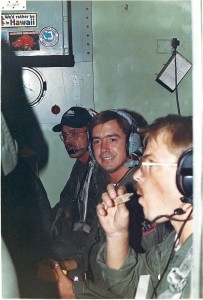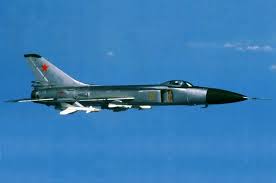

 |  |
I generally keep away from discussing my Air Force career here, which ended in retirement 13 years ago. It’s less relevant to me as the years pass. Not that I didn’t love it – I did. But my particular function in the Air Force – as a Russian linguist – is difficult for most to understand, and if I tell an occasional story I often get some hairy looks. But today, as veterans converge on Washington to “assault” their monuments, I’ve decided to tell a story, which is very true.
My AF career involved flying on specially configured reconnaissance aircraft, skirting as close as possible to Soviet borders without eliciting missile shots from them. I flew my first mission on an RC-135 out of a base near Fairbanks, Alaska, in 1981. I won’t get into mission particulars, but it doesn’t take much to surmise why a bunch of Russian linguists in an aircraft might want to loiter close to the Soviet Union. I was 21, and I was finally nervous.
Up to then I’d worked as an intel analyst in the D.C. area. In 1982 I went to the Defense Language Institute, attending their year-long intensive Russian course, then attended additional intel schools and a week in the woods north of Spokane, Washington, learning how to survive bailouts and crash landings and realizing I probably wouldn’t.
Three hours into that first mission, a Soviet Sukhoy-15 fighter aircraft intercepted us, the first of four that day. Flying 50 feet off our wing, I could see the pilot’s oddly styled helmet with a faceplate instead of an oxygen mask. He was loaded with air-to-air missiles, and I knew he wouldn’t ask questions if we strayed. He was there to kill us if we did. It had happened to US recon aircraft in the past.
My trainer that day was a wonderful guy named Fred, who encouraged me to head back to one of the only windows in the backend to look at the fighter. The Sukhoy-15’s red stars contrasted perfectly against its silver fuselage and tail, its long nose painted an odd, green color. A long probe jutted from the tip of the nose, and I could easily see the blunt ends of his infra-red missiles and the pointed tips of the radar guided ones.
The Soviet looked at me and waved. I hesitated, of course; these missions were all approved at the Joint Chiefs level, and I knew that incidents were to be avoided. Still, I waved back, which caused him to wave more. He wiggled his wings, the international sign for “follow me,” but I knew he was joking and shook my head. He waved his arm in a “follow me” motion, but, in a flash of naiveté, I flashed him a patch on my flight suit: an American flag.
To my amazement, the Soviet saluted sharply, disappearing beneath our aircraft in a barrel-roll motion. The last I saw of him was the thin, black smoke trail he left behind on his way home. I found out later he’d slipped forward to salute our pilots as well.
Many in my career field were killed or lost. They were shot down and killed in crashes. One entire RC-135 crew went down over the Bering Sea, never to be seen again. They simply vanished. The worst that happened to me was blown tires and hot brakes after landing in England one morning. Maybe not, but those are other stories, probably as unbelievable to you as this one.
Today I tip my hat to American veterans, especially those wheeling themselves across the World War II memorial in Washington, storming their castle. I’d love to buy a few of them a beer or two and tell stories, because that’s what veterans mostly do, given time.
But I’m also thinking today of the Soviet pilot, near the Kamchatka Peninsula, who I’d also gladly have a beer with. I’d love to talk to him about what little we knew when we were too young, when we had no idea, really, what hindsight was.